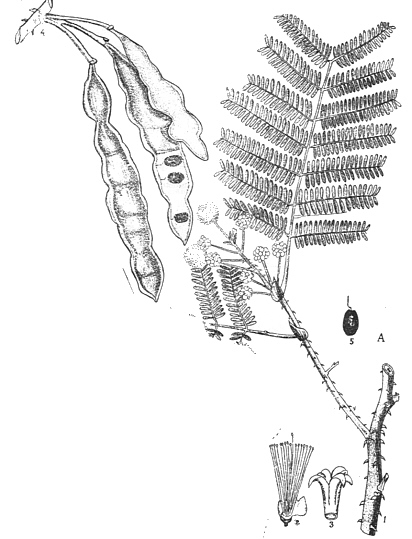

Zitierweise / cite as:
Carakasaṃhitā: Ausgewählte Texte aus der Carakasaṃhitā / übersetzt und erläutert von Alois Payer <1944 - >. -- Anhang A: Pflanzenbeschreibungen. -- Acacia concinna D.C. -- Fassung vom 2007-04-20. -- URL: http://www.payer.de/ayurveda/pflanzen/acacia_concinna.htm
Erstmals publiziert: 2007-03-19
Überarbeitungen: 2007-04-20 [Ergänzungen]
Anlass: Lehrveranstaltung SS 2007
©opyright: Dieser Text steht der Allgemeinheit zur Verfügung. Eine Verwertung in Publikationen, die über übliche Zitate hinausgeht, bedarf der ausdrücklichen Genehmigung des Verfassers
Dieser Text ist Teil der Abteilung Sanskrit von Tüpfli's Global Village Library
WARNUNG: dies ist der Versuch einer
Übersetzung und Interpretation eines altindischen Textes. Es ist keine
medizinische Anleitung. Vor dem Gebrauch aller hier genannten Heilmittel wird
darum ausdrücklich gewarnt. Nur ein erfahrener, gut ausgebildeter ayurvedischer
Arzt kann Verschreibungen und Behandlungen machen!
Falls Sie die diakritischen Zeichen nicht dargestellt bekommen, installieren Sie eine Schrift mit Diakritika wie z.B. Tahoma.
Verwendete und zitierte Werke siehe: http://www.payer.de/ayurveda/caraka0001.htm

Abb.: Acacia concinna D.C.
[Bildquelle: Kirtikar-Basu, ©1918]
Drury:
"Acacia concinna (Dec.) Do. Siki, DuK. Shika, Tam. Shikaya, Tel. Chinik, MaL. Kochai, Beng.
Description.—Climbing; branches irregularly angled, tomentose, armed with numerous recurved prickles; leaves bipinnated; pinnae 6-8 pair; leaflets numerous, linear, somewhat semi-hastate, mucronate; petioles with hooked prickles below; panicles terminal and axillary, with globular heads of flowers 3-5 together in the axils of a small bract or leaf, peduncled ; stamens distinct; legumes large, succulent, contracted between the seeds; valves wrinkled on the surface when dry ; flowers small, white. Fl. July—October.—W. & A. Prod, i. 277.— Mimosa concinna, Willd.-------Bengal. Assam. Mysore.
Economic Uses.—A considerable trade is carried on in some parts of the country in the pods of this shrub, which resemble the soap-nut, and are used, like it, for washing the head. The Hindoos also use them for marking the forehead. The leaves are acid, and are used in cookery as a substitute for tamarinds.—Roxb. Nimmo."
[Quelle: Drury, Heber <1819 - 1872>: The useful plants of India : with notices of their chief value in commerce, medicine, and the arts. -- 2d ed. with additions and corrections. London : Allen, 1873. -- xvi, 512 p. ; 22 cm. -- s.v.]